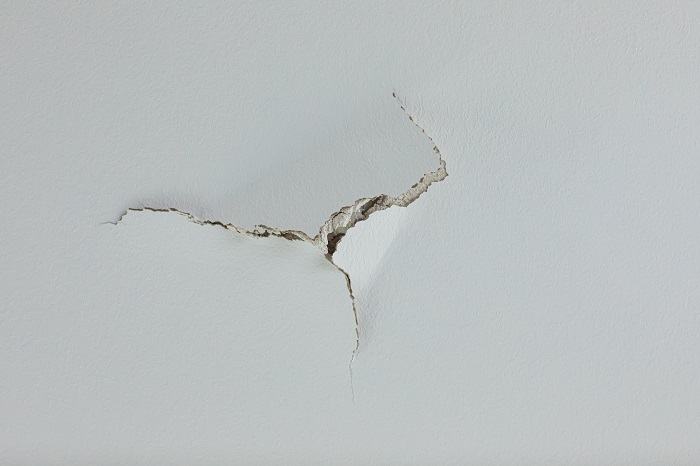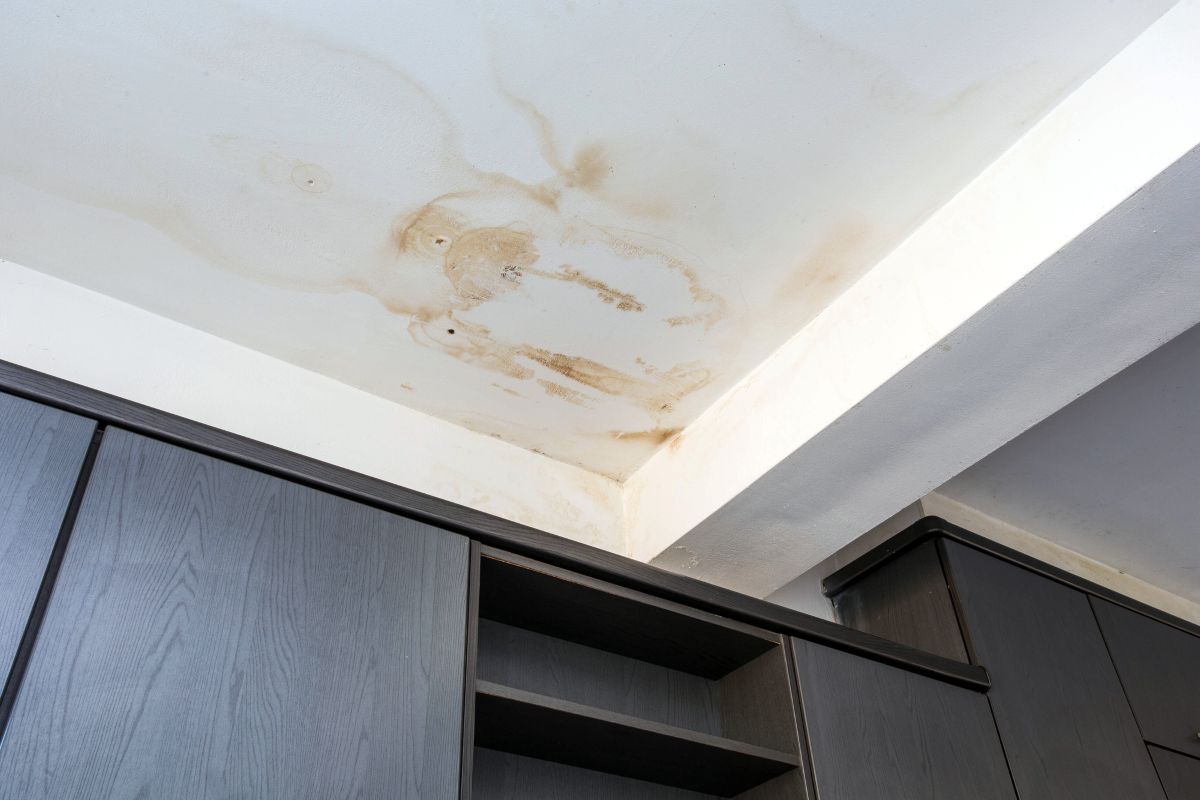In the course of our lives, we’ve all experienced the accidental aftermath of a momentary lapse in concentration – a doorknob careening into a wall, a wayward chair knocking against a freshly painted surface – all of which require some DIY repair.
These seemingly small incidents can leave a noticeable hole, an eyesore that taunts us every time we enter the room. Fear not, for with a bit of know-how and a handful of common supplies, you can easily become a wall-fixing maestro.
In this guide, we’ll explore the art of patching up holes in walls and doors using plaster and other readily available materials – allowing you to repair walls with ease!
The Basics of Wall Repair
Before going into the specifics, it’s crucial to understand the basics of wall repair. Most small holes in walls and doors can be fixed with a combination of plaster and a few tools you probably already have lying around.
Supplies You’ll Want to Have
- Plaster: Choose a high-quality plaster suitable for your wall type.
- Putty knife or Spatula: Essential for applying and smoothing out the plaster.
- Sandpaper: To ensure a smooth and seamless finish.
- Paint: Match the colour of your wall for a flawless end result.
- Drop Cloth or Newspaper: Protect your floors from potential mess.
- Masking Tape: Use to create clean lines and protect adjacent surfaces.
- Primer: For better paint adhesion.
- Dust Mask and Safety Glasses: Protect yourself during the process.
- Paintbrush or Roller: Apply the final coat of paint.
- Cloth or Sponge: Wipe away excess plaster and maintain a clean workspace.
Now, let’s explore the step-by-step process of fixing a hole in your wall.

Step 1: Prepare the Area
Laying down a drop cloth or spreading newspapers across the floor beneath the repair site is not just about cleanliness; it’s a strategic move to catch any falling debris. This protective layer ensures that your floor remains spotless and saves you from an additional cleanup chore.
Applying masking tape to the edges of the hole serves a dual purpose—it not only creates clean lines but also shields adjacent surfaces from accidental smudges or paint splatters. A little diligence in this step can go a long way in guaranteeing a polished end result.
Step 2: Clean the Hole
Cleaning the hole isn’t just a cursory task; it’s about preparing the canvas for your masterpiece. Use a cloth or sponge to meticulously rid the damaged area of loose debris and dust.
A clean slate ensures better adhesion of the plaster, laying the foundation for a seamless and durable repair. Taking a few extra minutes for this step can significantly enhance the longevity and effectiveness of your wall fix.
Step 3: Apply the Plaster
Applying plaster might seem like a straightforward task, but the key lies in the technique. Utilise your putty knife or spatula to generously spread the plaster over the hole.
Take care to feather the edges—a technique where you blend the plaster into the surrounding wall—ensuring a smooth transition that disguises the repair.
This step demands a measure of patience and precision, as it sets the tone for the entire repair process.
Step 4: Let it Dry
Once the plaster is applied, the waiting game begins. Follow the manufacturer’s instructions for drying time, allowing the plaster to set and solidify.
Rushing this step can compromise the integrity of the repair, so exercise restraint and let time work its magic. A fully dried plaster ensures a stable foundation for the subsequent steps, leading to a more resilient and aesthetically pleasing outcome.
Step 5: Sand the Patch
Sanding isn’t merely about smoothing out rough edges; it’s about achieving a flawless finish. Use fine-grit sandpaper to delicately sand the patched area, creating a seamless blend with the existing wall.
This step requires a gentle touch, as too much force may undermine the integrity of the repair. A keen eye for detail and a steady hand are your allies in crafting a polished and professional-looking surface.
Step 6: Apply Primer
Priming is the unsung hero of wall repair, enhancing paint adhesion and ensuring a consistent finish. Before diving into the final paint coat, apply a thin layer of primer to the patched area.
Primer not only improves the paint’s grip on the surface but also contributes to a more uniform and enduring result. Don’t underestimate the power of primer—it’s the secret ingredient that elevates your wall repair from good to exceptional.
Step 7: Paint the Patch
Choosing the right paint is crucial, but so is the application process. Select a paint colour that seamlessly matches your wall, and meticulously paint over the patched area.
Whether using a paintbrush or roller, aim for an even and controlled application. Multiple thin coats are preferred over a single thick layer, as they ensure a more natural and cohesive appearance. This step is where the transformation becomes tangible, turning an eyesore into a seamless part of your living space.
Step 8: Remove Masking Tape
As the paint dries, the moment arrives to unveil your handiwork. Carefully remove the masking tape to reveal clean and crisp lines around your repaired hole.
This is akin to the grand reveal in a magic trick, where the seamless integration of the repair with the rest of the wall becomes apparent. A steady hand and a deliberate pace are crucial to preserving the meticulous work put into the preceding steps.
Step 9: Inspect and Touch-Up
A close inspection is the final quality check before declaring your repair a success. Examine the patched area to ensure it blends seamlessly with the surrounding wall. If imperfections are detected, fear not; this step is where they can be addressed.
Armed with a small brush and a discerning eye, touch up any areas that may require a bit more attention. Inspecting ensures that your repair achieves the level of perfection you envisioned.
Step 10: Admire Your Handiwork
As you stand back to admire your freshly repaired wall, take a moment to revel in the satisfaction of your accomplishment. What was once an unsightly blemish has been transformed into a seamless and integral part of your home.
The culmination of patience, precision, and a touch of creativity has turned a potential eyesore into a testament to your DIY prowess. Take pride in your newfound skill and the ability to tackle wall repairs with confidence.

Repairing Larger Holes and Cracks in Walls
While the process for fixing smaller holes remains largely the same, larger holes and cracks may require additional steps. Begin by cleaning the damaged area and using a mesh patch or joint tape to bridge the gap.
Apply several layers of plaster, allowing each layer to dry before adding the next. Sand the patched area to create a smooth surface, and follow the remaining steps outlined earlier.
Larger repairs might take more time and effort, but with patience and precision, you can seamlessly restore even the most significant wall damage.
Tips for Matching Paint Colours Accurately
Achieving a perfect colour match is crucial for a flawless wall repair. To ensure accuracy, collect paint samples from the damaged area or use a paint chip to find the closest shade. Many paint stores offer colour-matching services, where they can create a custom paint mix to match your existing wall colour.
It’s also advisable to paint a small, inconspicuous test area and allowing it to dry, before applying the colour to the repaired section, ensuring a seamless blend with the rest of the wall.
Fixing Dents and Scratches on Wooden Doors
Wooden doors are susceptible to dents and scratches but fret not; repairing them is a straightforward process. For minor scratches, use a wood filler or putty that matches the door’s natural colour.
Apply the filler, let it dry, and then sand it down for a smooth finish. For dents, use a damp cloth and an iron to steam the affected area gently.
Once the wood fibres swell back into place, sand and refinish the door. For a professional touch, apply a matching stain or paint to complete the restoration.

Repairing Textured Walls with Stucco or Textured Paint
Textured walls, while beautiful, pose a unique challenge when it comes to repairs. For small holes or cracks, a stucco repair compound can be used to recreate the texture.
Apply the compound with a putty knife, matching the existing texture as closely as possible. Once dry, paint over the repaired area to seamlessly blend it with the rest of the wall.
Alternatively, textured paint can be used to mask imperfections. Choose a textured paint that closely resembles your wall’s texture and apply it following the manufacturer’s instructions.
Understanding When It’s Time to Call in Professional Help
While DIY repairs can be fulfilling, there are instances where professional assistance is the wisest choice.
If the damage is extensive, involving structural issues or water damage, it’s crucial to consult a professional contractor. Additionally, if you lack the necessary skills or confidence to tackle a particular repair, seeking expert help is a smart decision.
Remember, addressing issues promptly can prevent further damage and save you from costly repairs down the line. Professionals have the expertise to assess the situation accurately and provide lasting solutions, ensuring the integrity and safety of your home.
If in doubt, don’t hesitate to reach out to a qualified contractor for a thorough evaluation and expert guidance.
All in all, its Just Another Brick in the Wall
By following these simple steps and armed with a few essential tools, you can easily become the go-to expert in fixing holes in walls and doors.
Remember, the key is patience and attention to detail. As you embark on your DIY journey, revel in the satisfaction of transforming an unsightly blemish into a seamless part of your home.
Now, here’s a question for you: What other home repair challenges would you like guidance on? Feel free to share your thoughts, and let’s explore more ways to enhance your DIY skills!

